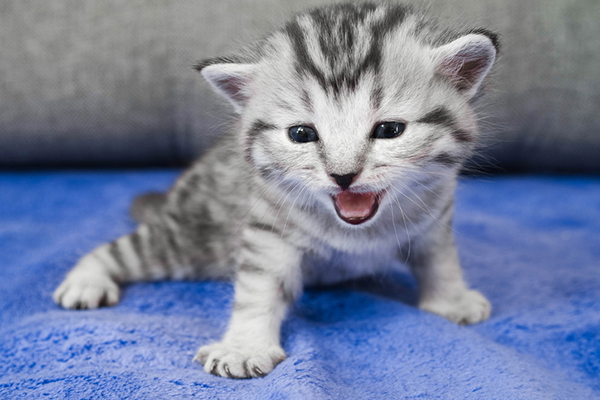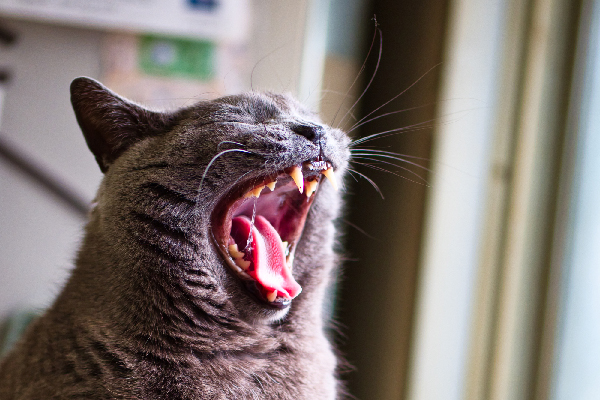How many teeth do cats have? Do cats lose their baby teeth like human children do? If you’ve ever wondered how many teeth cats have or if cats get an adult set of teeth, we’ve compiled 10 fun facts dealing with the number of teeth cats have throughout their lifetime — and if that number changes.
1. Like humans, kittens are born without teeth.

Kittens don’t need any teeth in the first few weeks while they are nursing around the clock.
2. A kitten’s teeth begin to come in between 2 and 6 weeks of age.
These first teeth are called deciduous teeth, baby teeth or milk teeth. The teeth erupt from beneath the gum line. The incisors (the tiny teeth in the front top and bottom of the mouth) are the first to appear, followed by the canine teeth (the “fangs”) and premolars (the teeth right behind the canines). Cats do not have any deciduous molars.
3. How many teeth do cats have? A kitten has 26 baby teeth.
These temporary kitten teeth start to fall out around 11 weeks of age. During this time, you might find tiny teeth on the floor or in your kitten’s food bowl, although teeth are often swallowed by the kitten as she eats so you might not see anything at all. You might also notice a small amount of bleeding from the mouth. This is all normal.
4. Sometimes a cat’s baby teeth do not fall out like they are supposed to.
This condition is called “retained deciduous teeth.” These teeth can cause damage to the permanent teeth coming in, so your vet might recommend pulling them. This is frequently done at the same time as the spay or neuter surgery to avoid putting the cat under anesthesia twice.
5. A kitten’s permanent teeth come in between 4 and 6 months of age.
The incisors come in first, followed by the canine teeth, premolars and molars.
6. Back to the question — how many teeth do cats have…
Adult cats have 30 permanent teeth.
7. Cats can develop periodontal disease.
Without regular brushing at home and annual or bi-annual professional dental cleanings, cats can develop periodontal disease, also called gum disease. Periodontal disease can lead to tooth loss and also affect your cat’s overall health.
8. If your cat’s tooth becomes infected, your vet might recommend tooth extraction.
“Tooth loss is caused by bacteria that develops into plaque and tartar,” explains Missy Tasky, DVM, owner of Gentle Touch Animal Hospital in Denver, Colorado. “The bacteria get under the gum line and cause damage to the structures that support the tooth. This leads to loss of bone and mobility of the tooth.”
9. Tooth loss can also occur due to damage to the tooth.
Broken teeth can occur if the cat chews on something hard or from trauma (for instance, if the cat falls and hits her teeth on something). In some cases, a veterinary dentist might be able to save a cat tooth by doing a root canal.
10. What happens to cats who have lost a number of teeth?
Most cats have no problems adapting to tooth loss. “Most dogs and cats can eat fine, even with the loss of several teeth,” Dr. Tasky says. “Some animals have lost all of their teeth and are still able to eat dry food. The goal, however, is to retain as many teeth as possible because the teeth help contribute to the strength of the jaw.”
Tell us: What are your most pressing questions about cat teeth and cat dental issues?
Thumbnail: Photography ©Seiichi Tanaka | iStock / Getty Images Plus.
Read more about cat teeth and cat dental issues on Catster.com:








